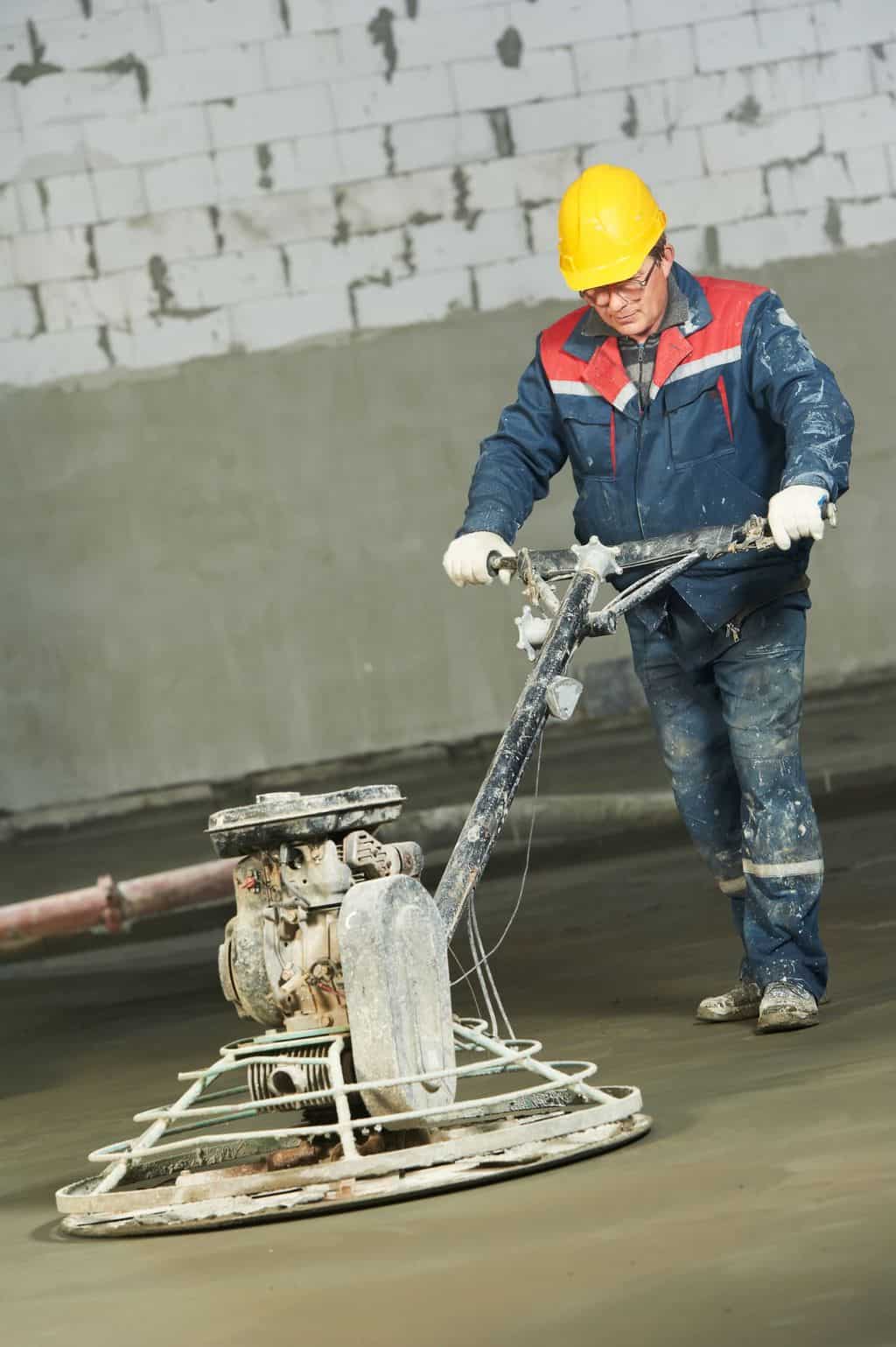Are you looking for a tried and true durable flooring solution but are bored of tiles? Do you need your flooring to have the durability of concrete but, at the same time, you want your house to be fashionable? Give your home a fresh new look and choose to install stained concrete flooring. This type of flooring can solve many flooring questions and issues:
- The hard surface is unmatched; it collects less dust and dirt, agents that cause problems for people with allergies.
- You can create the look you want with the scoring patterns you select, and the color you choose for stain.
- As long as you are starting with a solid, stable foundation, the flooring will not crack or shift on you over time.
- Concrete Flooring is incredible affordable!

Why Choose Stained Concrete Flooring?
One of the smartest ways to make your floor a visually appealing space is to use stained concrete. Selecting stained concrete flooring for major projects has become one of the most popular flooring approaches in both new construction and renovations. The unique character it adds to a home is one of the reasons people are choosing it, rather than any other flooring option. Stained concrete flooring is durable, easy to clean, and is perfect for people who suffer from allergies.
1. Choose Concrete Flooring to Keep Allergies at Bay
It is well documented that carpet can be a major factor in an increase in allergies. The fibers in carpet trap dust, dirt, mold, and other allergens, and no amount of vacuuming or carpet cleaning can prevent this from recurring. Proper installation and sealing the concrete floors with a non-VOC sealer will make it impossible for any mold growth underneath these floors, a problem that hardwood or even laminate floors can have. Concrete flooring is easy to clean and maintain and a really smart and inexpensive choice, especially for allergy sufferers!
2. Having Concrete Flooring is an Easy Process, From Installation to Matinence
Installing stained concrete flooring is not only an easy process, but also highly cost efficient. The durability of concrete flooring is an added advantage. You may wonder if it is difficult to clean this type of floor or if cleaning stained concrete requires any special processes or products, but this is not the case with this type of flooring. Cleaning is completely easy, especially since, if properly installed, the stained concrete floor will be smooth and will not catch dust or stains easily. Stained concrete flooring not only helps in maintaining a clean home, but also a healthy home.

3. You Can Customize the Flooring Colors and Effects
You can make your own color variations in the stained concrete by mixing and matching or applying acids at different rates. Different application processes allow you to control how mottled or marbled the stained concrete flooring looks. If you prefer the marbled look, you will simply spray the acid on the concrete when staining, as this will give it the most variegated design. If you want to downplay the mottled look, you can use a push broom or other brush to go over the wet acid in a figure-8 motion to make it smoother and more even. Don’t expect the final look of the stained concrete to be a smooth color, though, because this finish is translucent, so there will be areas of darkness and lightness naturally in the concrete finish.
Getting a customized look to your floor is another reason for selecting stained concrete flooring. When selecting stained concrete flooring keep in mind that acid will give your floors a marble-like, variegated color pattern. The colors that are usually seen in this concrete flooring are browns, reddish browns, and even green. An added advantage of this type of flooring is that making changes to the staining on this kind of flooring is just as hassle free as installing it; hence you can have a change of patterns or color every few years if you so desire.

So How Do You Go About Customizing Your Concrete Flooring?
This may be the best part: staining concrete flooring for a completely customized look is an easy thing to DIY!
Pouring and curing a concrete floor is a very doable process, if you are willing to put in the labor. Typically, with concrete, it is almost always worthwhile to hire a licensed contractor to install an interior concrete floor, since the labor involved is intense, mistakes can be costly, and the materials used in a concrete floor are so inexpensive. If, however, you are going to do the concrete pouring yourself, there are limitless how-to videos out there to show you how. This how-to video is a great short video that shows you the process on a small scale, but gives the specifics of the process of installing concrete inside the home.
Staining Concrete Flooring
Once the concrete is installed, make sure you follow these pre-requisites before staining concrete flooring in your home:
- A brand new concrete floor that is not worn is the best option for staining. If you are starting with a preexisting concrete floor and just wanting to stain it, it must be completely smooth and uniform in order for the stain to make the flooring look the best that it can.
- If you are staining a newly poured concrete floor, it is important to allow time (at least three weeks, depending upon the suppliers instructions) for it to cure completely before you attempt to stain it.

Now, you are ready to stain the flooring! While the process is called “staining” and these are referred to as “stained concrete,” you do not actually use a stain on the concrete floor. What you are really doing is causing a chemical reaction between the minerals in the concrete, the acid you will be using, water, and inorganic salts. This chemical reaction creates the colors and the mottled look on the concrete floor.
What Tools Do You Need to Stain Concrete Flooring?
There are very few tools that you need to stain concrete flooring. Check out the video below (yes, I realize the intro is a little silly, but it is very informative and, hey, also fun!) for an overview of the process and a little more detail about the concrete and staining process. After the new concrete is poured and has cured (or, if you are staining preexisting concrete, it has been cleaned thoroughly), you will need to gather the following tools for your acid staining process:
- A Sprayer (or assorted sprayers): The manufacturer of the concrete staining acid will recommend the right kind of bottle for your product. You may also want to spritz the concrete with water from another spray bottle to further dilute the stain and produce a little more variation within the coloring.
- Paint Roller: To apply the sealer after the acid application process is finished.
- Masking tape and paper: Before starting, make sure to carefully mark off walls and floors where the stain will not go, as acid stains are permanent.
- Rubber gloves and safety glasses: You are working with acid, be sure to err on the side of caution! Also, make sure to wear heavy duty shoes and clothes that you won’t mind ruining.

The basic process is that you will do the staining simply by spraying the acid solution onto the concrete in several applications. Brushes, assorted sprayers, and dilutions of the acid with water and ammonia concentrations can all be used to increase the customization and really enhance your final completed masterpiece. One customized stained concrete floor I saw had a sun pattern scored into the concrete. Someone had gone to a lot of effort and laid gold glitter into the scores before the stain was applied. After the final “varnish” coat was finished, the gold glitter solar pattern was still visible, but subtle and really unique.

Hi Jack,
Well, that would depend. Does it appear that the floor was sealed? If so, you may be able to get by with buffing it out. Depending on the condition of the floor, and if it it’s sealed and polished, you may need to re-apply polish, or again, just may need to buff it a little with a fine polishing pad. Hopefully, it doesn’t need stripped.
How was the concrete treated to make it brown? Is it a stain, or something mixed in the concrete, painted??? It’s really difficult for me to pin down a solution without knowing what gave the concrete it’s color and if it appears to have been sealed/polished.
The concrete is a stained concrete, it looks like it could have been polished at one time or another.
I guess my questions is does the marks look like they are literally deep enough to where they’ve gone beneath the level of the applied stain?
No the scratches look like theyre on top of the surface. I just want to have a nice showroom shine and scratch free surface. What should I use for the shine and to get the scratches off? Thank You.
Ah, now I see! :~) I’d try buffing it with a white pad. If that still doesn’t work or you’re not happy with the result, I’d be afraid that you’ll have to strip that spot and re-apply the sealer (if needed) and finish/polish. Hopefully, that will help you out so that you don’t have to strip the whole floor and refinish/polish.
Hello, i have stained concrete in my home and my dogs nails have scratched it. Can you help me get them out. I would really appreciate it.
Thank you
Craig
Hi Craig,
Is the scratch only on the finish or literally through the stain? Read the post above yours, that should help. Keeping your dog’s nails trimmed will also help. ;~)
Our church is adding a fellowship hall, i.e. pot luck meals, performances etc, that will also be used for sports i.e. basketball & volleyball. We are considering stained concrete flooring and are concerned about maintainence. What is the recommended method for maintaining the floor and how often would it need to be resealed?
Hi Bob,
Most of the time, the floor can be cleaned with just a water/vinegar solution. There’s no telling how often the floor would need to be resealed – hopefully years if the sealer is good enough and enough coats are used. This is definitely one time where it won’t pay to be stingy with the sealer! It sounds like it might be a good idea to look into commercial products as they are usually tougher.
Hi,
I have stained concrete floors that are sealed and waxed. I am putting in area rugs and was told to be careful of the type of carpet pad I use. Any suggestions? Can I just use regular carpet pads that are sold at flooring stores?
Thanks,
Lidna
I think that perhaps they were referring to pads that have rubber or other synthetic material because they can wind up sticking to the floor and be a real headache to remove the rubber.
I am leasing a commercial building with a concrete floor that I am thinking of staining. I am wondering, if after my lease expires, there is a way to remove the stain finish and bring the floor back to it’s original condition.
Thanks
Hi Sherry,
That’s an interesting question! I’ve haven’t run across anybody ever wanting to ‘undo’ the stain on a concrete floor. I did some investigating and couldn’t find a concrete answer. (Pun intended) I would think the only way to remove the stain would be to cover it up with fresh concrete (which can bring with it a whole assortment of issues!) to literally having to grind down the concrete to get beneath the stain, which is probably going to damage the concrete. The staining process is a chemical reaction and goes into the concrete, there’s not any way to get it out once it has gotten in there.
Any chance of talking your idea over with the owner(s) and see if they’ll let you do it even though it’s a permanent change?
I am in the process of staining a basement living room, and during my cleaning work I scratched the floor with a shop vac picking up. The stain didn’t cover scratches, I tried to sand them off using 60 grit on a floor polisher, and also tried to strip and re-stain. There are still some scratches. Any ideas? Could they have scratched the stain and the chemical reaction didn’t take place?
Adam,I’m as puzzled as you are about why the scratches aren’t taking the stain now. I’ll see if I can do some research and get back to you about this. Weird.
I have a basement floor that I want to redo! It is concrete—and a mess. It has different layers of paint, pits and stains. My husband wants to cover it it tile (boring); I want to either stain in or paint it. Because of condition of floor, do you think I should have fun with paint…or get the floor to bare bones and stain it???
Deborah
Hi Deborah,
You know, it really depends on what YOU want to do with the floor and how much work you’re willing to do (or how much work you can get your hubby to do!). I know, I know….. that’s not very helpful Flooring Lady! But you’re the one living there and YOU know what you want. :~)
I’m not the expert The Flooring Lady is, but I’d paint it and have lots of fun with it. Maybe you can even use the flaws as part of the pattern or design.
That’s one vote for painting…….. :~)
Hi!
What can I use to clean my stained concrete floors that won’t leave a film?